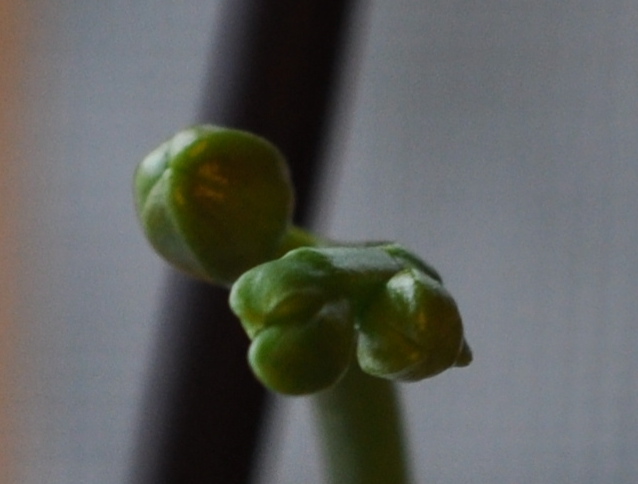
The orchid bud begins as a tiny "spike", which develops from an undifferentiated rounded growth.
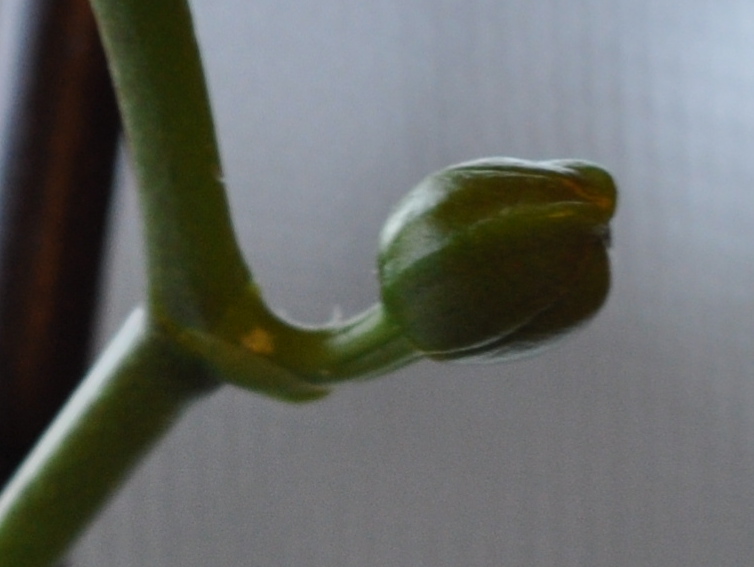
The spike fattens into a smooth bud.
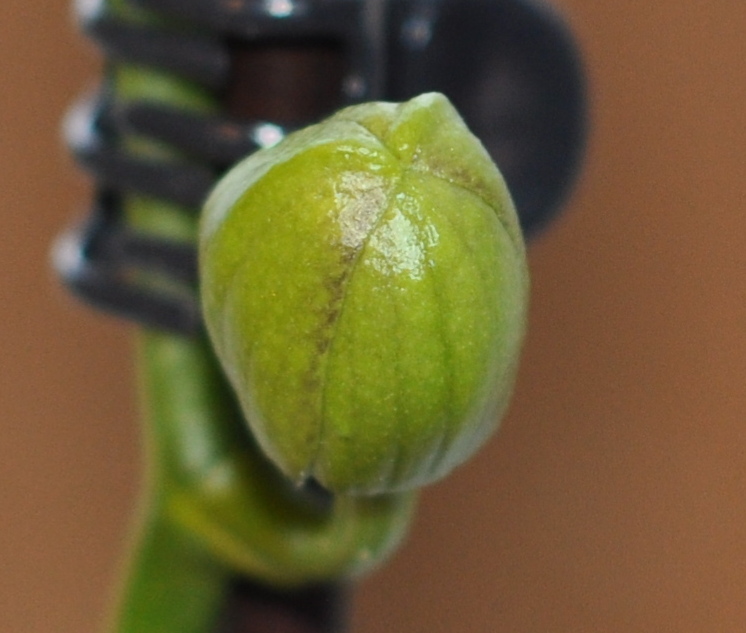
The bud develops ridges running toward the tip.
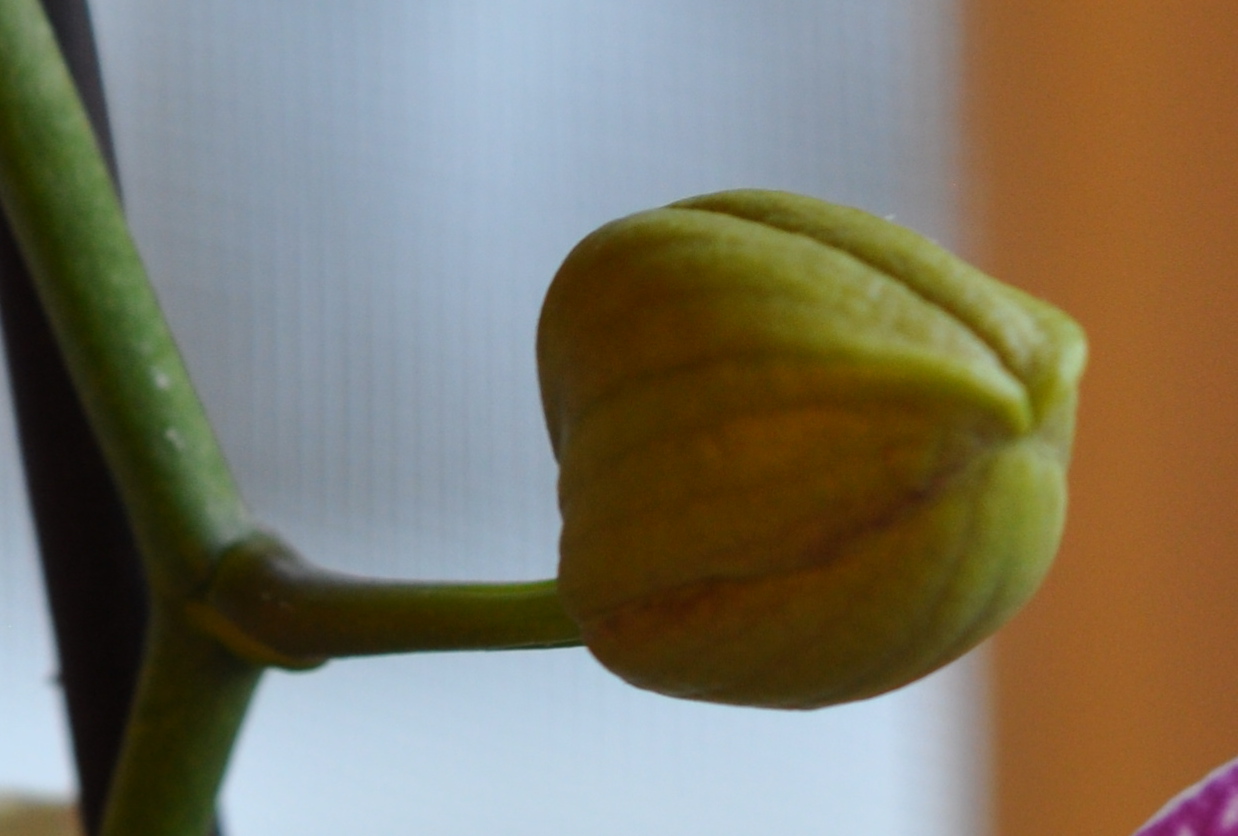
The bud swells and darkens as the flower develops inside.
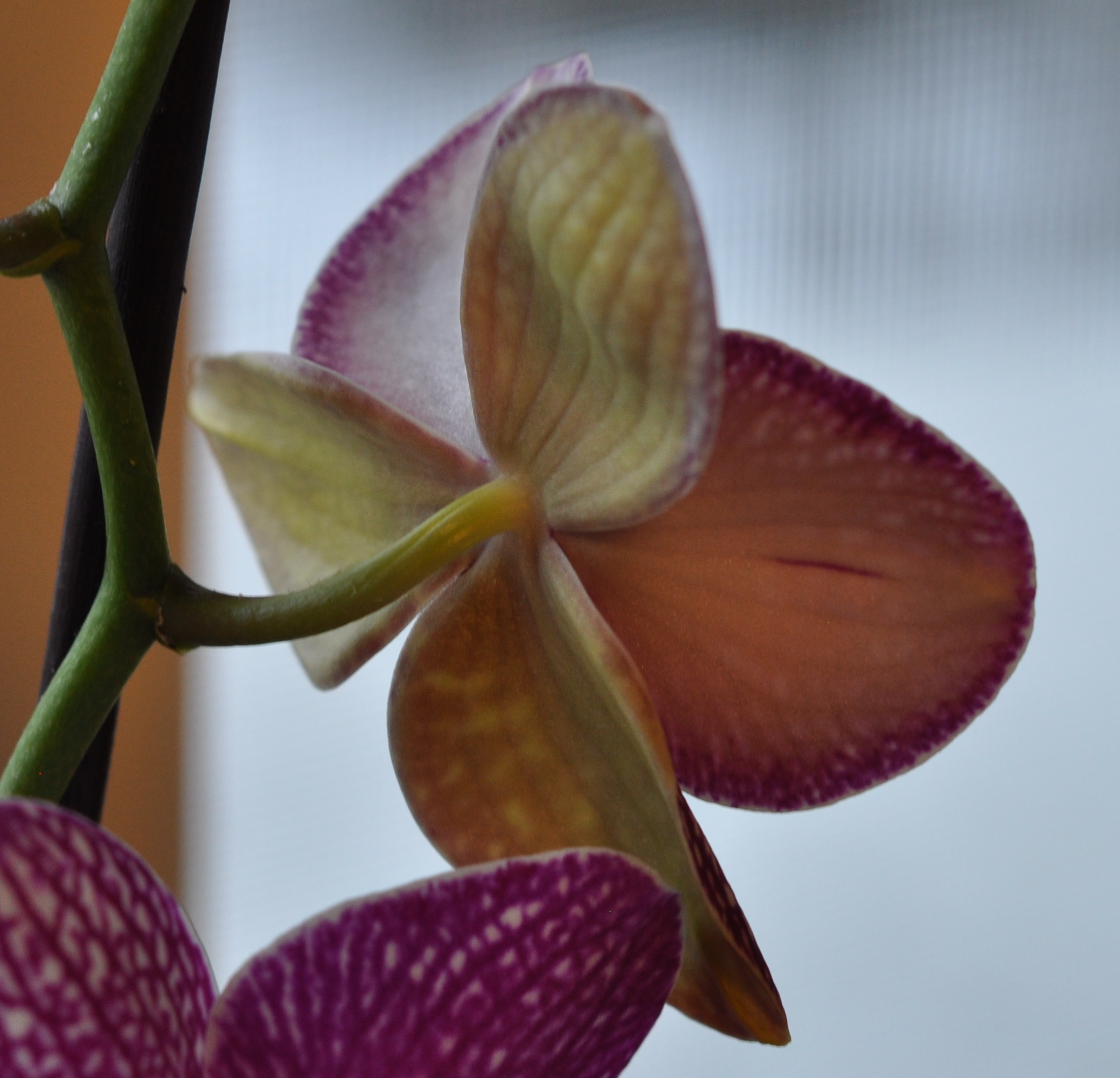
The flower opens.
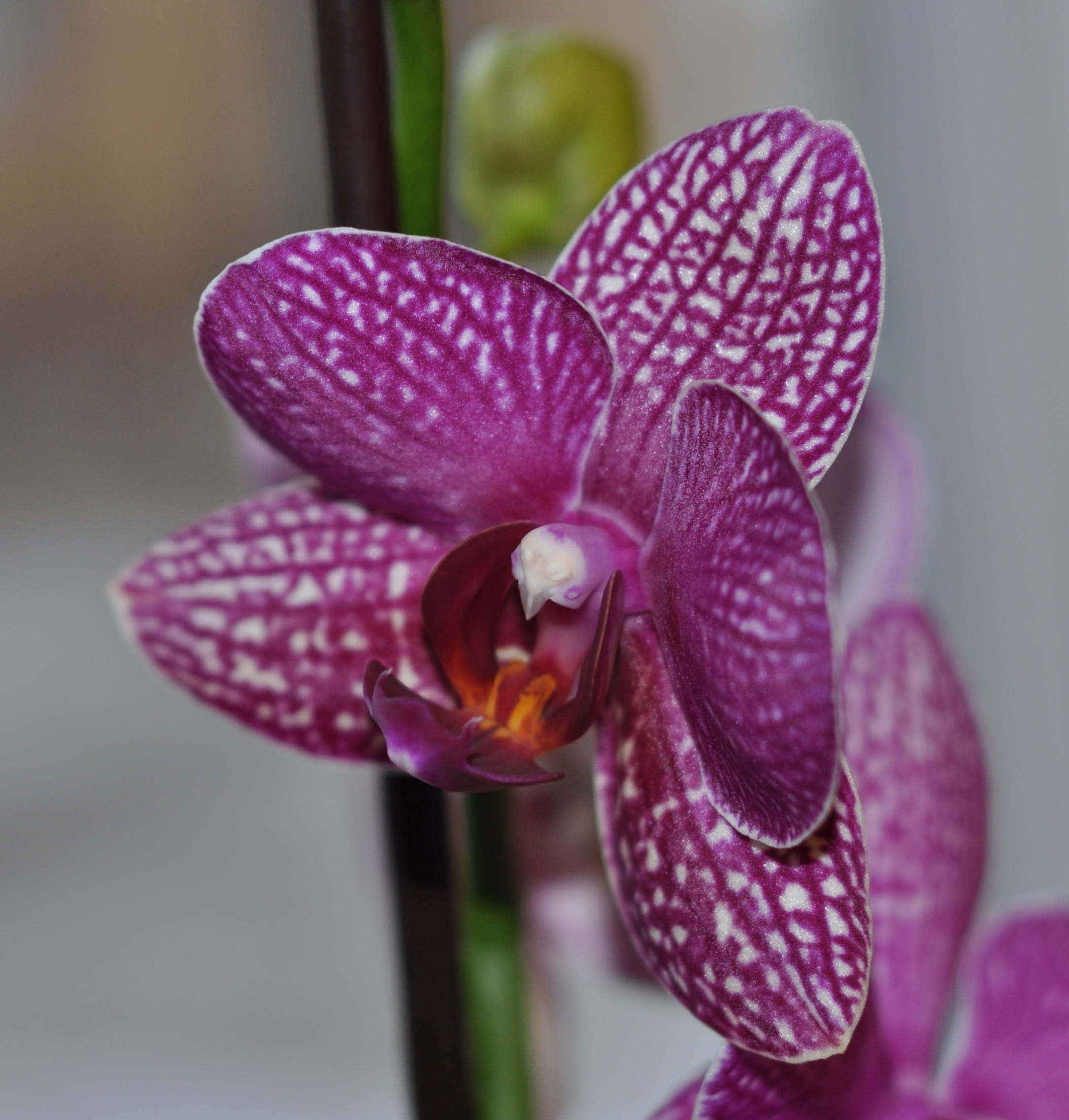
These intricate guard structures formed inside the bud, around the pollen.